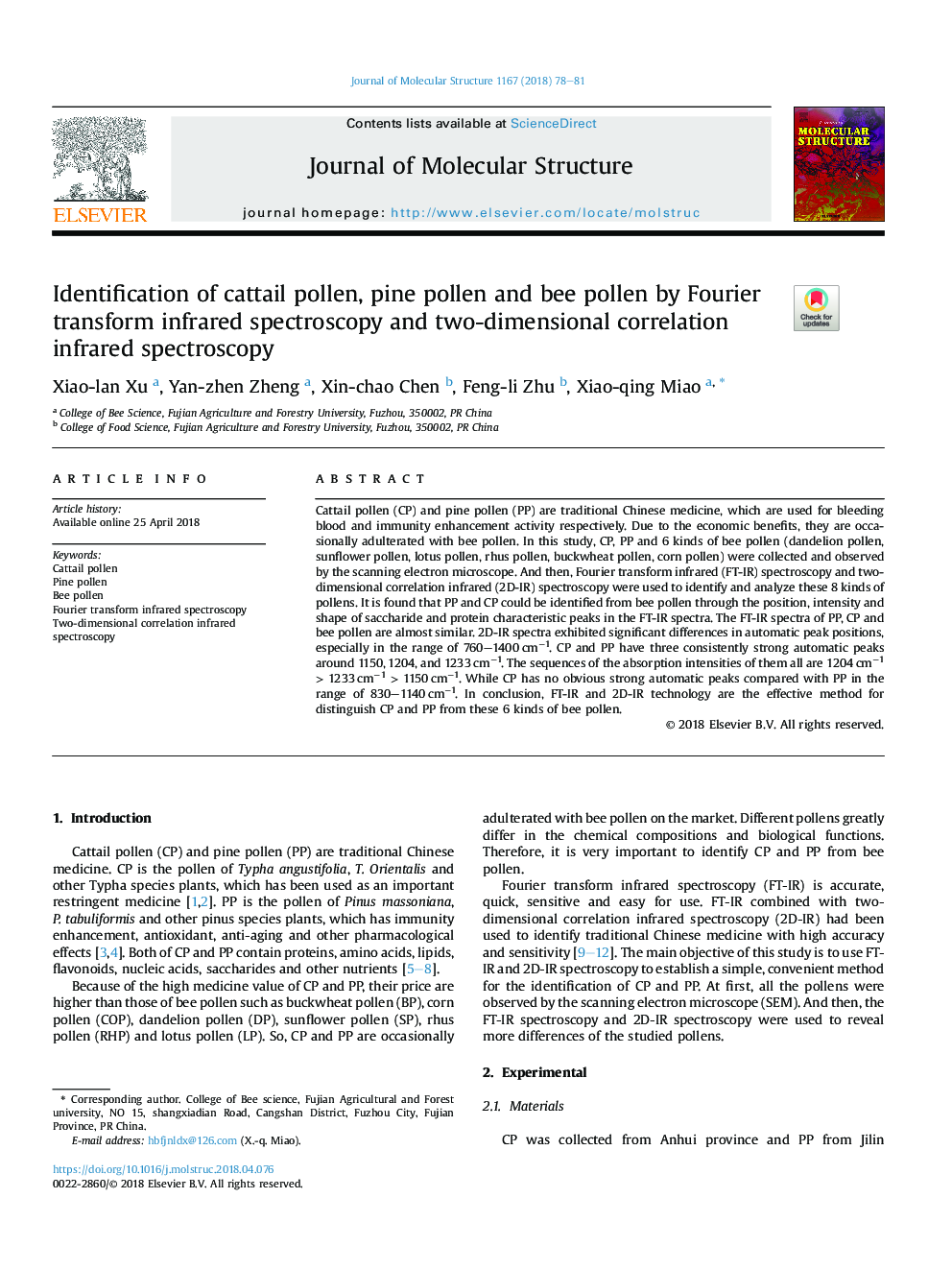| Article ID | Journal | Published Year | Pages | File Type |
|---|---|---|---|---|
| 7807049 | Journal of Molecular Structure | 2018 | 4 Pages |
Abstract
Cattail pollen (CP) and pine pollen (PP) are traditional Chinese medicine, which are used for bleeding blood and immunity enhancement activity respectively. Due to the economic benefits, they are occasionally adulterated with bee pollen. In this study, CP, PP and 6 kinds of bee pollen (dandelion pollen, sunflower pollen, lotus pollen, rhus pollen, buckwheat pollen, corn pollen) were collected and observed by the scanning electron microscope. And then, Fourier transform infrared (FT-IR) spectroscopy and two-dimensional correlation infrared (2D-IR) spectroscopy were used to identify and analyze these 8 kinds of pollens. It is found that PP and CP could be identified from bee pollen through the position, intensity and shape of saccharide and protein characteristic peaks in the FT-IR spectra. The FT-IR spectra of PP, CP and bee pollen are almost similar. 2D-IR spectra exhibited significant differences in automatic peak positions, especially in the range of 760-1400â¯cmâ1. CP and PP have three consistently strong automatic peaks around 1150, 1204, and 1233â¯cmâ1. The sequences of the absorption intensities of them all are 1204â¯cmâ1 > 1233â¯cmâ1 > 1150â¯cmâ1. While CP has no obvious strong automatic peaks compared with PP in the range of 830-1140â¯cmâ1. In conclusion, FT-IR and 2D-IR technology are the effective method for distinguish CP and PP from these 6 kinds of bee pollen.
Keywords
Related Topics
Physical Sciences and Engineering
Chemistry
Organic Chemistry
Authors
Xiao-lan Xu, Yan-zhen Zheng, Xin-chao Chen, Feng-li Zhu, Xiao-qing Miao,
